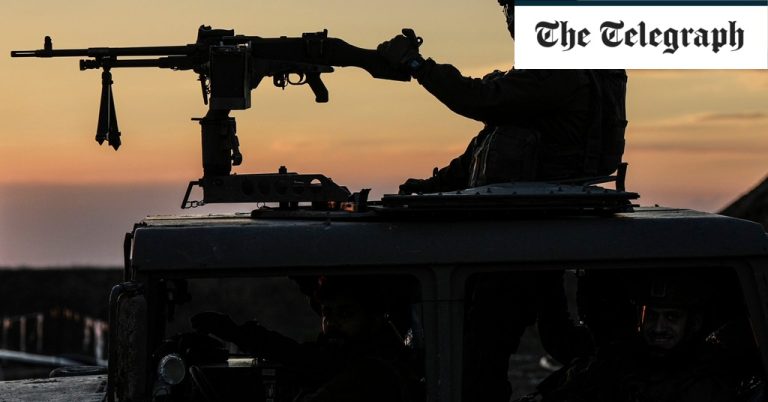The ongoing conflict in Gaza is the deadliest Israel has fought since the Yom Kippur War, which erupted on October 6, 1973, when a coalition of Arab forces launched a surprise attack from the Golan Heights and Sinai Peninsula.
Although the war lasted just shy of three weeks, around 2,800 IDF troops were killed, while a further 8,800 were wounded.
In today’s war, 557 soldiers have died, including those who were killed during the October 7 attacks.
Most of the injuries sustained by IDF troops in Gaza are a result of explosive weapons, such as improvised explosive devices and rocket-launched grenades, which “cause more damage,” said Col Banov.
Although soldiers are equipped with military-grade battle gear that protects the torso, their limbs and faces are left vulnerable to shrapnel released during explosions, he explained.
“We do not see a lot of chest injuries but we see penetrating injuries to the limbs, which can require amputation. We see injuries to eyes, too.
“Eyes are about one per cent of the body surface but we see about five to seven per cent of our soldiers have different types of eye injuries. This is because of shrapnel going from wide angles and soldiers not wearing their eye protective gear, which are not very comfortable.”
This war ‘way more dangerous’
Despite the “fierce” fighting unfolding in Gaza and the proportion of soldiers suffering severe wounds, the IDF is losing fewer men to injuries than it used to, said Col Banov.
He said the case-fatality rate – the proportion of soldiers who go on to die from their wounds – stood at 6.5 to seven per cent. This compares to 13 to 15 per cent for the Second Lebanon War, in which 121 Israeli troops died and 1,244 were injured.
“We see way more severely injured people than the conflict that we had a decade ago and two decades ago. Meaning that the war is far more dangerous, far more harmful.
“But although our soldiers are more severely injured, the fatality rate is way lower.”
He attributed this to advances in battlefield medical care – from the type of drugs administered to troops, to the cutting-edge technology deployed by the Medical Corps in Gaza.
